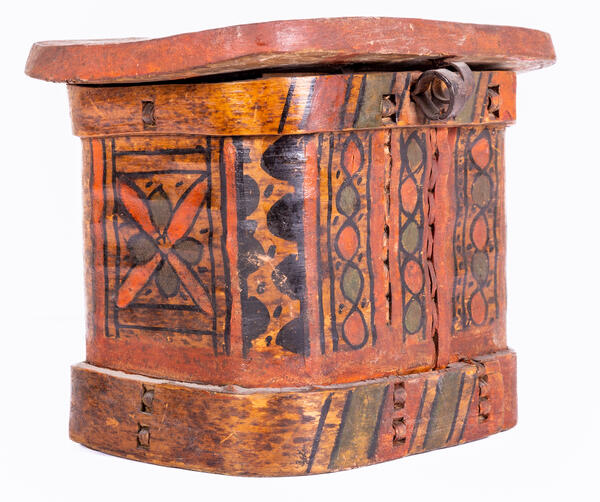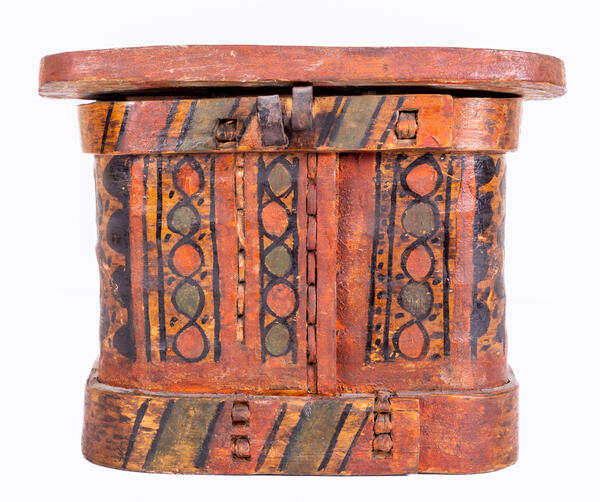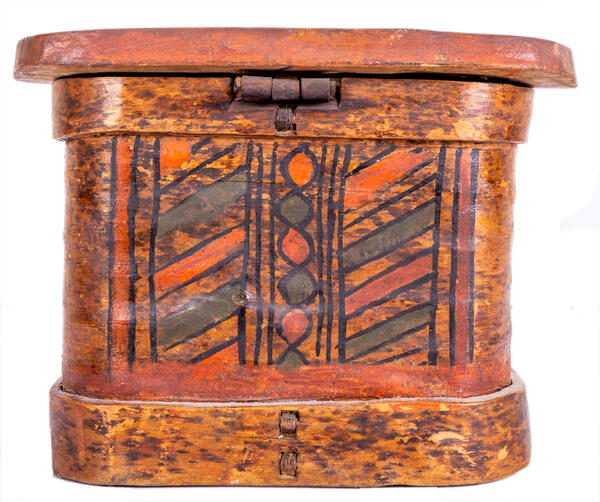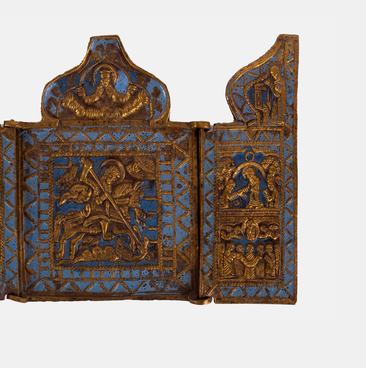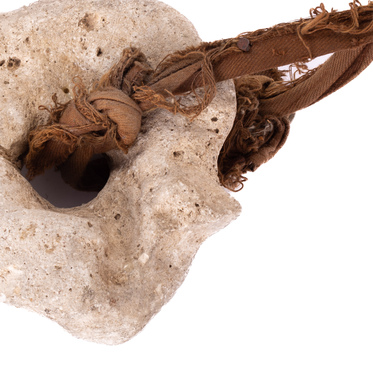A korob is a container for storing and transporting small household goods, and clothing. Vladimir Ivanovich Dal defined a korob as a “distinctive Russian utensil”. Such boxes were used to store, and if necessary, to transport clothes, books and other household goods to a new place.
Korobs were made of bent thin pine plank or aspen, less often linden or ash bast. For this purpose, a board or a strip of bast was peeled of bark, straightened and steamed or soaked for flexibility. Then notches were made on the inner side of the pattern, the overlapping ends of the piece were folded and fastened with a splint or bast fibers. While the material was still pliable, a board was inserted from below: as it dried, the walls were compressed and the bottom was fixed in the grooves. The result was a rectangular box with rounded corners or a tall cylinder.
On the edge of the base of the box a fastening rim was placed — a slightly protruding and rather wide strip of bast. This rim was used to secure the lid with iron hinge rings on one side and “ears” for a padlock on the other side. The box as a repository of valuables was not supposed to remain open.
Korobs demonstrated domestic prosperity. They were often decorated with painting: floral and geometric decorative patterns, images of brave lads and beautiful maidens with cups, as well as fantastic beasts.
The importance of the korob in the life of the family is indicated by set expressions: “to fill up korobs” (to get rich), “to dress up korobs” (to prepare a dowry). The ironic phrase “to tell a korob of lies”, meaning to say a lot of doubtful things, is also associated with filled boxes.
The folk and poetic tradition links this container to a woman’s womb as a result of the association of the box with women and the purpose of the box (to be a container); a pregnant woman was said to “walk like a korob”.
The wedding ceremony included a korob stage, when the bride’s dowry was transported to the bridegroom’s home: bride’s parents and the best man, who carried the dowry, were called korobeyniki. At the wedding itself, the bride and groom were encouraged “to live, prosper and have many korobs”, that is to have many children.
